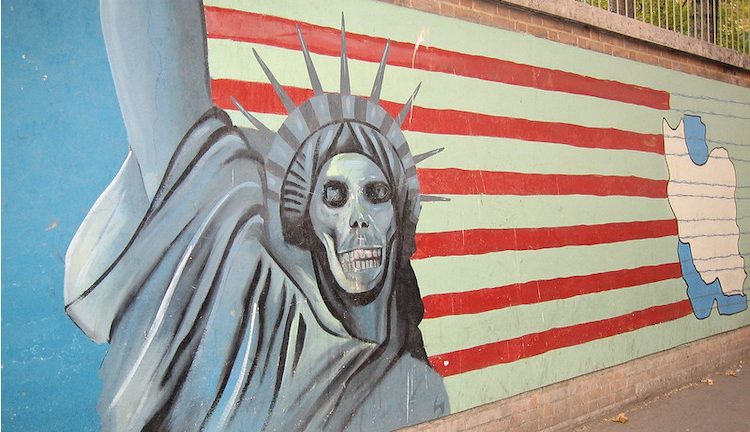By Jonathan Power
LUND, Sweden | 16 January 2024 (IDN) — Of all the present foes of America, it is Iran, which has consistently been, over time, the number one. Since its Islamic Revolution in 1979 that overthrew the secular-minded Shah and supplanted him with a militant, sometimes warlike, Islamic theocracy, it has been America’s Great Satan. (In fact, it is Iran who first bandied around the description of the US as “the Great Satan”.)
In the magazine Foreign Affairs, two professors, Daniel Benjamin and Steven Simon, wrote, “Imagine historians 100 years from now trying to decide which foreign power the US feared most in the decades from the late Cold War…They would see Russia first as an arch-enemy, then as a friend, and finally as a challenging opponent. They would see China become a great power rival. North Korea would appear as a sideshow. Only one country would be depicted as a persistent and implacable foe over so many years: Iran.”
This state of hostilities has been going on a long time. When Donald Trump was president, many believed he would give the order to attack Iran. But then pulled back, comfortable that the West’s sanctions were ruining the Iranian economy.
Since Trump killed off the deal wrought by President Barack Obama that would have ended the effort by Iran to get near to having a nuclear bomb, it has returned to enriching uranium towards a level that could mean it could quite quickly build a nuclear bomb, if it chose to.
Over the last decade, Iran has been supporting Bashar al-Assad in Syria, a proven merciless dictator, provoking Israel via its surrogate, Hezbollah, in Lebanon and giving help to the rebelling Shi’ites in Iraq. In Yemen, it has given modest support to the Houthi uprising and, to a degree, is behind the recent Houthi attacks on ships in the Red Sea transporting goods to Europe. Only in Afghanistan, where its interests coincided with America’s, did Iran unofficially work on the same side as the US and NATO.
One-fifth of the world’s exported oil flows through the Persian Gulf, on which Iran has a long shoreline. Contrary to panicky voices in Washington, the Straits of Hormuz at the Gulf’s head cannot be closed. It’s too wide for that. However, ships in the Red Sea making their way to the Suez Canal are sitting ducks.
In the balance of power terms, Washington’s obsession with Iran is absurd. The US and its allies in the Middle East-Israel, Saudi Arabia, and the United Arab Emirates spend around a trillion US dollars annually on their armed forces. Iran spends $4.5 billion. However, Iran’s drone technology is quite advanced, and these have been given to the Houthis.
The 2015 agreement with Obama was meant to be the entry door to engaging in negotiations with the regime to limit Iran’s provocative interventions in the Middle East. Clearly, its absence has unshackled the militants in the government.
Obama missed some crucial opportunities. Iran offered him an olive branch early in his tenure, and he spurned it. He came to push for the anti-nuclear negotiations too late in the day. Trump, with his perverse urge to sabotage everything that Obama had accomplished, was able to easily smash the deal before it had the time to set itself in concrete.
After 44 years of alienation from and persecution by the US and its allies, why should anyone be surprised that Iran has attempted to push back, especially where it can do damage in its backyard? Its constant hostility towards Israel is because it fears that Israel is working for the downfall of its regime, which it probably is. In Iraq there would be no Iranian presence if there hadn’t been the US-led war of 2003. Years before that, Saddam Hussein was helped by the US in his war against Iran. The Houthis today, with Iranian support, are fighting Yemen’s central government, which has the backing of the Saudi air force. The US and the UK have provided the latter with sophisticated weapons.
Saudi Arabia has an urge to bring down the regime in Tehran, for reasons part political and part religious. This is why Iran, via the Houthis, is attempting to bleed the Saudis. But who gets kudos from supporting the Saudi tactics which spare neither women, children or hospitals?
Iran and the US have never been further apart. Until now, the EU has tried to be a moderating force but is cowed by the reach of American economic sanctions. Yet if the US undermined Iran to the point of destabilizing its economy and its government, it would be shooting itself in the foot, unleashing further instability in the Middle East, not least a massive refugee crisis.
Iran can be belligerent, but it doesn’t help to confront it constantly. The present-day drama being played out in the Red Sea of the Houthis firing at Western-bound shipping would not have happened if Trump had not blown up the nuclear agreement and if the US was seen as more of a mediator between Israel and Gaza than a participant, supplying arms.
Obama showed the way of dealing constructively with Iran, with EU and Russian support. The sooner the US can return to that path, the sooner the Middle East becomes rather more peaceful, and the expansion of the Israel/Gaza war is contained. Otherwise, both Iran and the US will continue to believe that the other is the Great Satan, with unpleasant and fruitless consequences. [IDN-InDepthNews]
Copyright Jonathan Power
Visit: www.jonathanpowerjournalist.com
Image: Mural Depicting The “Great Satan” | itfcfan | Flickr
IDN is the flagship agency of the Non-profit International Press Syndicate.


